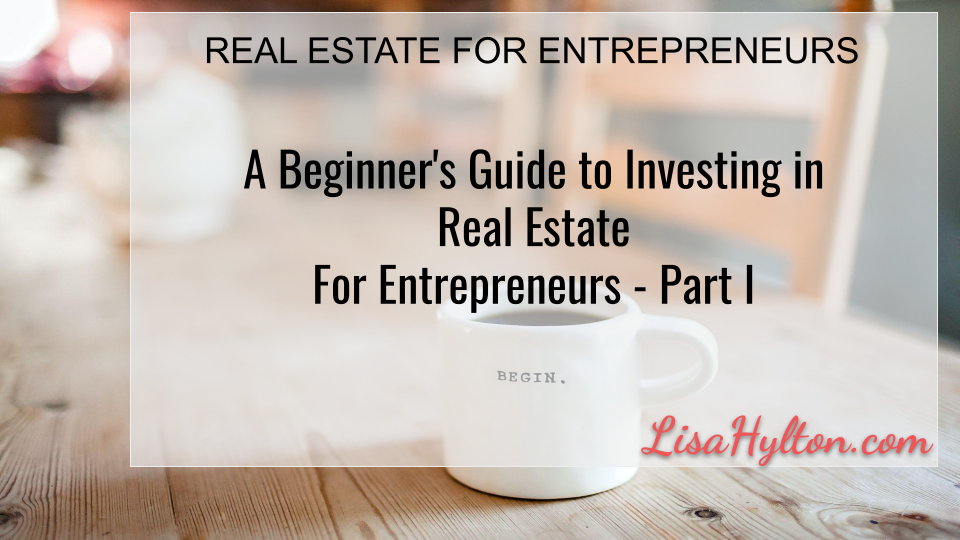I often get asked, “What’s the best way to get started investing in real estate?” Let me reassure you, there are many ways to get started and that you aren’t alone if you’ve been interested and haven’t quite made the jump yet.
This article will help relieve some of the overwhelm and intimidation wishful investors face in leaping by helping you self-diagnose your status, deciphering what you want, and revealing the best way to get started with those two factors in mind.
What we’ll cover:
1) Sky-high View of Where You Are
2) Determine Your Why
3) Decide How Hands-on You Want To Be
4) Assess Your Risk Tolerance
5) Determine The Amount You Want To Invest
6) Decide Which Type of Real Estate Investor You Are
Step 1: Get a Bird’s-eye View of Your Current Situation.
Before plopping any amount of money in an investment, you must have a clear view of where you are in life, what’s behind you, and what’s to come.
Maybe you’re just starting your business, seasoned business owner, serial entrepreneur, or soon-to-retire business owner.
Perhaps you’re looking for a large, one-time payout, or maybe you’re interested in smaller, ongoing interest income.
Do you have any amounts in mind like how much you want to invest, how much you’d like to earn, or what your financial freedom number is?
Getting a 30-thousand foot view of your current situation and answering these potentially tough questions about yourself will help you assess the amount of risk you’re willing to face, how aggressive your investment strategy should be, and the timeframe in which you need to see returns.
Step 2: Determine Your Why
There are potentially thousands of ways you can get involved in real estate investing (house hacking, mobile home parks, syndications, Airbnb’s, corporate housing, just to name a few). In almost every opportunity, you stand to make some money.
Shiny object syndrome is real and can have you frantically leaping from one opportunity to the next, only to discover that this one takes too long, that one is too hands-on, and the one before that was too passive.
This is why it’s so important to determine your personal, most inner reasons for investing – your WHY.
Take some time to truly understand your personal and financial goals and identify what you want out of investing.
Do you want to create passive income so you can scale back from your business and be present with your kids?
Are you interested in becoming a landlord and managing property full-time?
Are the tax benefits of real estate most attractive to you? What do you really want?
Becoming firm in your reasoning and goals before investing will help you avoid shiny object syndrome and the stress it causes down the road.
Step 3: Decide How Hands-on You Want to Be
I won’t believe you if you tell me you haven’t seen those HGTV shows where they take a dilapidated junk house with mold and critters and turn it into a champagne-worthy gotta-have-it piece of real estate with significant curb appeal.
If you’re vying to be the one busting drywall and exploring the crawl spaces, you are perhaps a more hands-on investor. It’s physically tough, yet gratifying work.
If meeting unexpected critters and wearing goggles while removing old dirty toilets makes you cringe, the world of real estate investing has passive, hands-off investment options for you. This is a pivotal decision in the process, so take your time and really determine just how hands-on you prefer to be when it comes to your real estate investments.
Be sure to consider your current situation, your why, the time you have on hand, and your financial goals.
Step 4: Assess Your Risk Tolerance
All investments – stocks, mutual funds, real estate, and even gold – come with risk. Along these same lines, every bit of risk correlates with the potential reward. High-risk investments come with higher potential payouts, and low risk investments tend to have a lower opportunity for profit.
As an example, a new construction highrise in a transitioning area may be riskier while an existing apartment building with current tenants might present lower risk. Real estate investment components always include physical assets and tenants, along with many other moving parts, and there are often ways to mitigate risk. But there’s always the risk of a total loss.
If the idea of potential losses makes you wince, you should consider beginning with smaller amounts of money so you can learn the ropes and gain confidence. Your returns will come in the form of experience and education at first, and with time, as you grow your capital, the financial returns will come around.

Step 5: Determine Your Investment Amount
Now that you clearly understand your current life situation, financial and time-commitment goals, and the risks you’re willing to take, you can begin to think about the amount of money you’re ready to invest. I hope I don’t have to explain why you shouldn’t throw your entire life savings at any investment opportunity.
Nonetheless, I will let you know you should begin with a modest amount you’re comfortable not being able to access for about five years.
Your finances should be set up so that all your current living expenses are entirely covered, you have separate savings for emergencies, and that you have additional plans for income and expenses for at least six months into the future.
When you begin to review investment deals, you’ll also consider the investment’s exit strategies, just in case you need to get your money out sooner than expected.

Step 6: Decide Which Type of Real Estate Investor You Are
Finally, here’s the fun part. At this point, you’ve evaluated where you are, how hands-on you want to be, how risky you want to play, and how much money you’re willing to invest. With this information, you can narrow the types of investments that best fit your lifestyle and goals.
Most likely, you fit into one of these groups:
– The Lots of Money / Little Time / Hands-off Investor
– The Little Money / Little Time / Hands-off Investor
– The Little Money / Plenty of Time / Hands-on Investor
– The Lots of Money / Plenty of Time / Hands-on Investor
Within each of these groups, you might pursue a narrowed-down handful of opportunities that will allow you to best use the assets at your disposal – your time and your money. For example, hands-on investors with lots of time can invest in Fix and Flips, wholesales, house-hacks, or even leading their own syndication deal. In contrast, hands-off investors without much time are more suited for commercial real estate syndications and crowdfunding investment sites.
Conclusion
Investing in real estate is as big of an endeavor and as exciting as you thought it was, which means it can also be overwhelming. As you can see, there are many ways to begin investing in real estate. It will be easiest for you to determine your own, personalized approach by clearly answering the questions presented above, step-by-step.
Read more about the investor group types and the investment opportunities that fit each investor’s category here The Beginner’s Guide to Investing in Real Estate For Entrepreneurs Part 2.
You can begin investing in real estate with just a few hundred or a few thousand dollars, learning along the way, and slowly building up your knowledge about real estate investments and your capital. Don’t be afraid to fail, though, because even the most successful real estate investors have lost money somewhere. They are “successful” now, though, because they kept going.
Want to Invest with Lisa?
If you are interested in learning more about passively investing in apartment buildings, click here https://lisahylton.com/invest/ to sign up to learn more about upcoming opportunities.
About the Author










